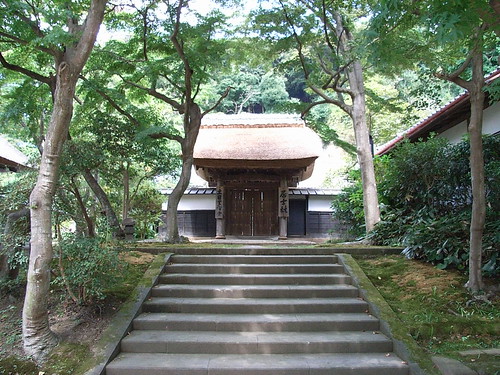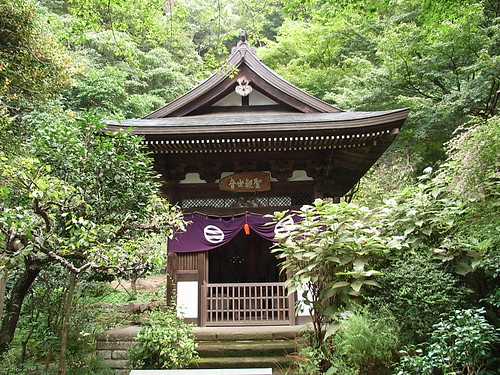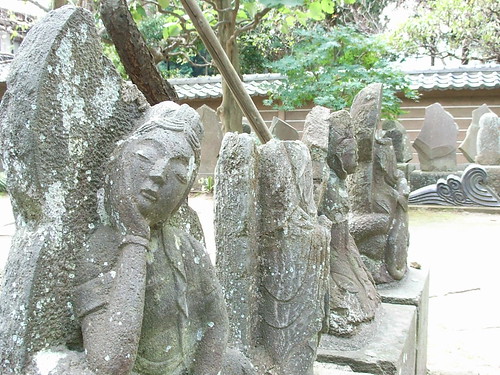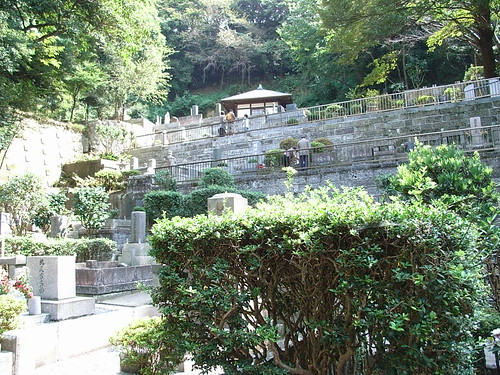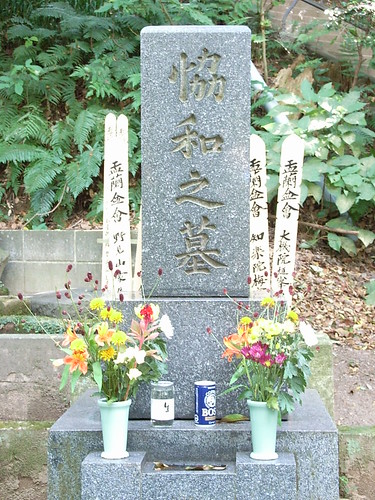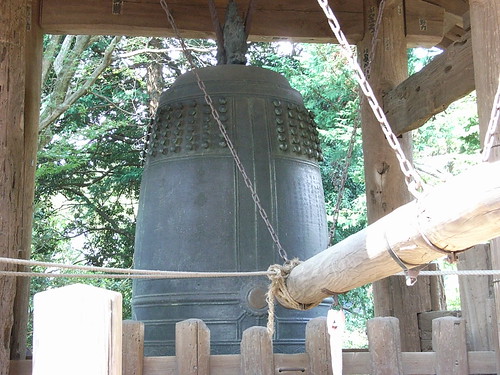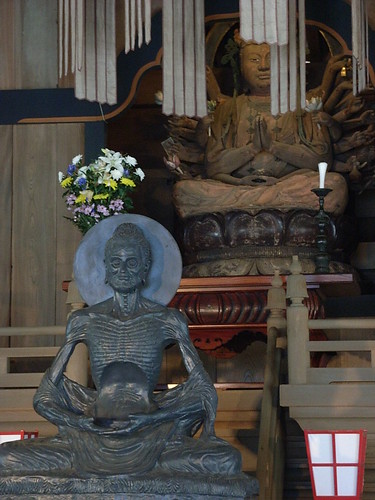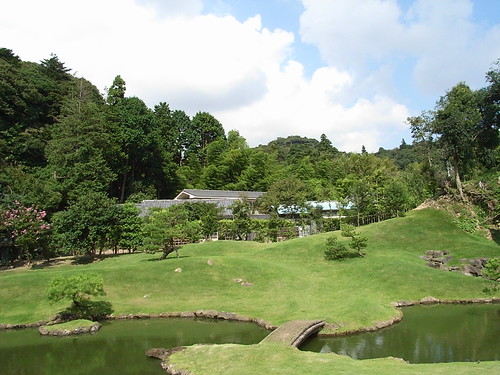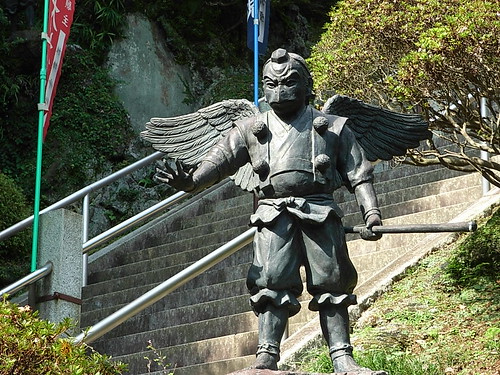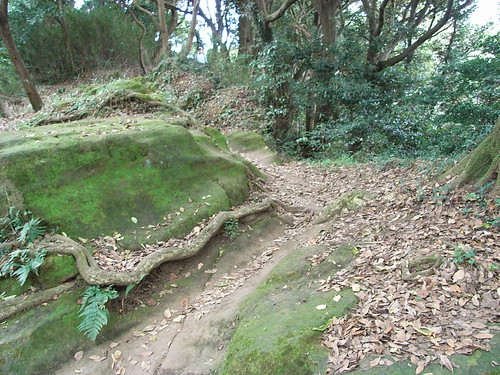Chris and I were supposed to go back to L.A. on Thursday, but decided to stick around for a few extra days on our own dimes. We’d hiked Takao-san on Thursday, and since I was roped into an extra shoot on Friday, Saturday was really my only extra day there. We decided to take a train to the coast south of Tokyo to the town of Kamakura, the capital of Japan from the 12th to the 14th century.
We had a few targets we definitely wanted to hit up, but mostly we just aimed to get off the train and wander around through temples and city streets. And, as luck would have it, the Engaku-Ji Temple was right across the tracks from a train station. After we stepped over the train tracks and walked through a small garden, we were standing on the grounds of one of the largest and oldest Zen temples in Japan.
One of the things that struck me, similar to the shrines and temples at Takao, was how seamlessly the religious structures were integrated into the surrounding natural environment. Everything was meticiously manicured and controlled, of course, but the dense forest that surrounded the temple seemed to be reaching in and through the grounds, the buildings taking the back seat.
… or, in certain circumstances, the religious structures are actually inside the natural ones.
The temple itself, although somewhat crowded with tourists (and much moreso than Takao-san) was still very, very peaceful. We stopped by a shrine containing one of the Buddha’s teeth (off limits, unfortunately) and lit incense and sat for a long time inside the shrine devoted to the temple’s founder. Also, there were some great, ancient statues laying around.
We kept wandering through the temple, and eventually found our way to the graveyard. Or, more accurately, grave city. Real estate is a premium in Japan, even when you’re dead, so the graveyards are built incredibly close to one another. It’s a fair mirror of the cities of the living, for better or worse.
Aside from the beautiful and intricate gravestones, the major difference was the attitude of visitors in the graveyard. There were a fair number of people walking through the rows of graves, washing stones, sweeping pathways, replacing old flowers, etc. There were even more families there, visiting specific graves to pray, leave offerings, and generally act like they were on a picnic. The mood was joyous. Almost jubilant. Even the offerings on the graves made me smile. This particular person got a coffee and a sake. Not bad.
We then climbed another long wooden staircase to a the Ogune, the largest bell in Kamakura. More excitingly (for me, at least), it was cast in 1301 and is a designated “National Treasure of Japan.” It’s only rung once a year – on New Year’s Day. Which is too bad, ’cause I would have loved to hear what this giant old bell sounded like. But I’m guessing if I just wound up and banged it with that giant log, I’d be gently escorted out of the country.
So instead, I walked over to a small stand near the bell and ordered up some traditional maccha tea. Yes, it was hot and humid, and yes, we just walked around for quite some time, but I still ordered hot tea. Maccha is the powdered green tea that’s found almost exclusively in Japan. It’s used in tea ceremonies, zen temples, and – more recently – in snack foods. But the old-school hot tea is the way to go. Look at this presentation!
The tea itself was thick and rich, with a slightly sweet, almost grassy aftertaste. It also came with three wrapped sweets, which melted in my mouth and tasted amazing when eaten while drinking the tea at the same time. Chris got an unusual cold fruit jelly dish that was much more refreshing than the maccha, but didn’t carry any of the weighty cultural importance my dish did. So there.
We then returned to the street and walked through North Kamakura for a short while until we came upon the Kencho-ji Temple. This temple was from around the same period as the first, although slightly less crowded with tourists, as there wasn’t a train station conveniently located across the street.
The big highlight here was the building housing the ’emaciated Buddha’ statue, sitting right in front of a chubbier, rounder version of the good prince.
It also had a meticiously manicured zen garden, with a pond in the shape of the kanji symbol for “mind.”
After we’d toured the grounds, we noticed a small path leading behind the temple. Chris and I walked down, and discovered another set of long staircases climbing a small mountain behind the complex. As we went up, we saw several small houses, a cleansing shrine, and these jolly welcomers:
When we got to the top, there was another small shrine, scented with incense and austere in the way only a wilderness shrine in Japan can be. There was also a small path leading straight into the woods behind it. Intrigued, we entered, and began an impromptu hike down to the city proper.
Originally traveled September 23-24, 2006.
Tags: Hiking, Japan, Trail Write-Ups

